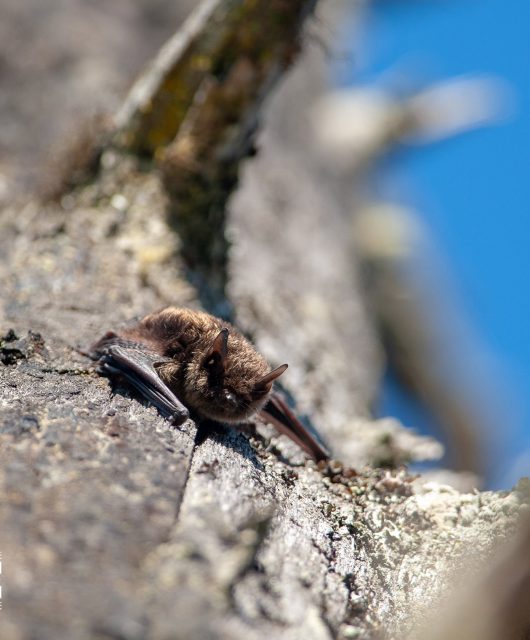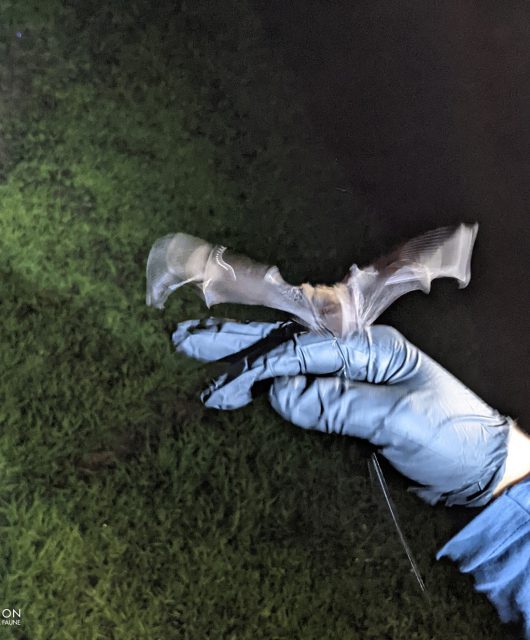The Canadian Wildlife Federation Turtle Team spends a lot of our time focusing on the Blanding’s Turtle.
This is an Endangered species, but it is by no means the only species that we target. This spring for example, we shifted our focus to the Northern Map Turtle.
The Northern Map Turtle
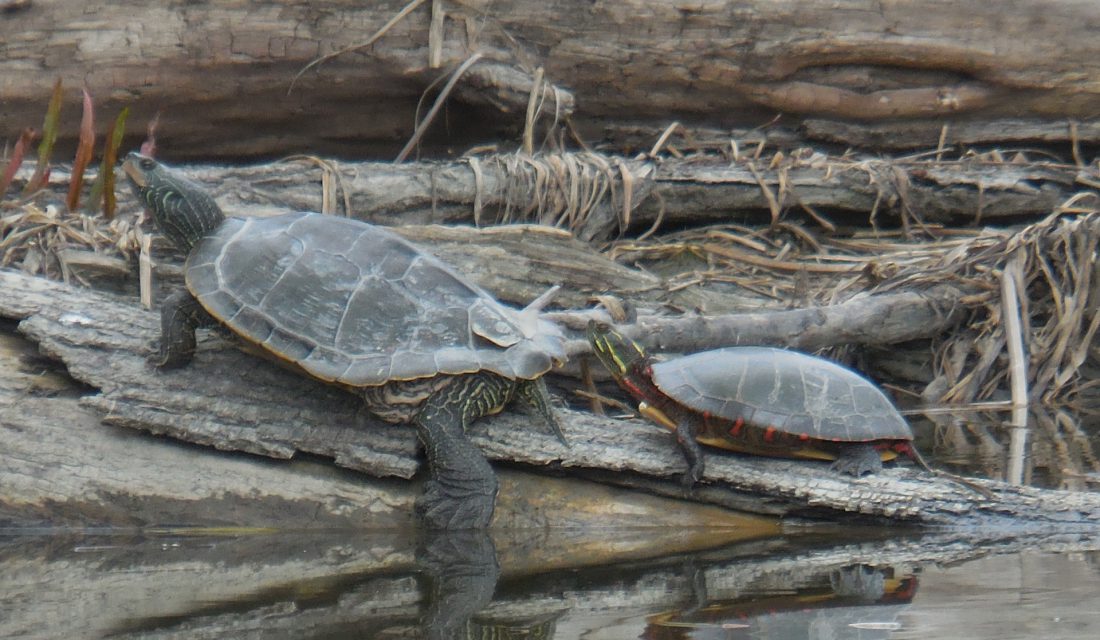
The Northern Map Turtle can easily be confused with the more common Painted Turtle. Closer inspection would reveal that Map Turtles have faint lines adorning their shells (from which they get their name), a serrated rear edge to the shell, and lack the red that Painted Turtles have on the shell and legs. Female Map Turtles are also considerably larger than males, growing upwards of 20 centimetres in shell length.
These two species also differ in their preferred habitat and behaviour. Although Painted Turtles can be found in just about any permanent water body, Map Turtles prefer large open bodies of water such as lakes or large rivers.
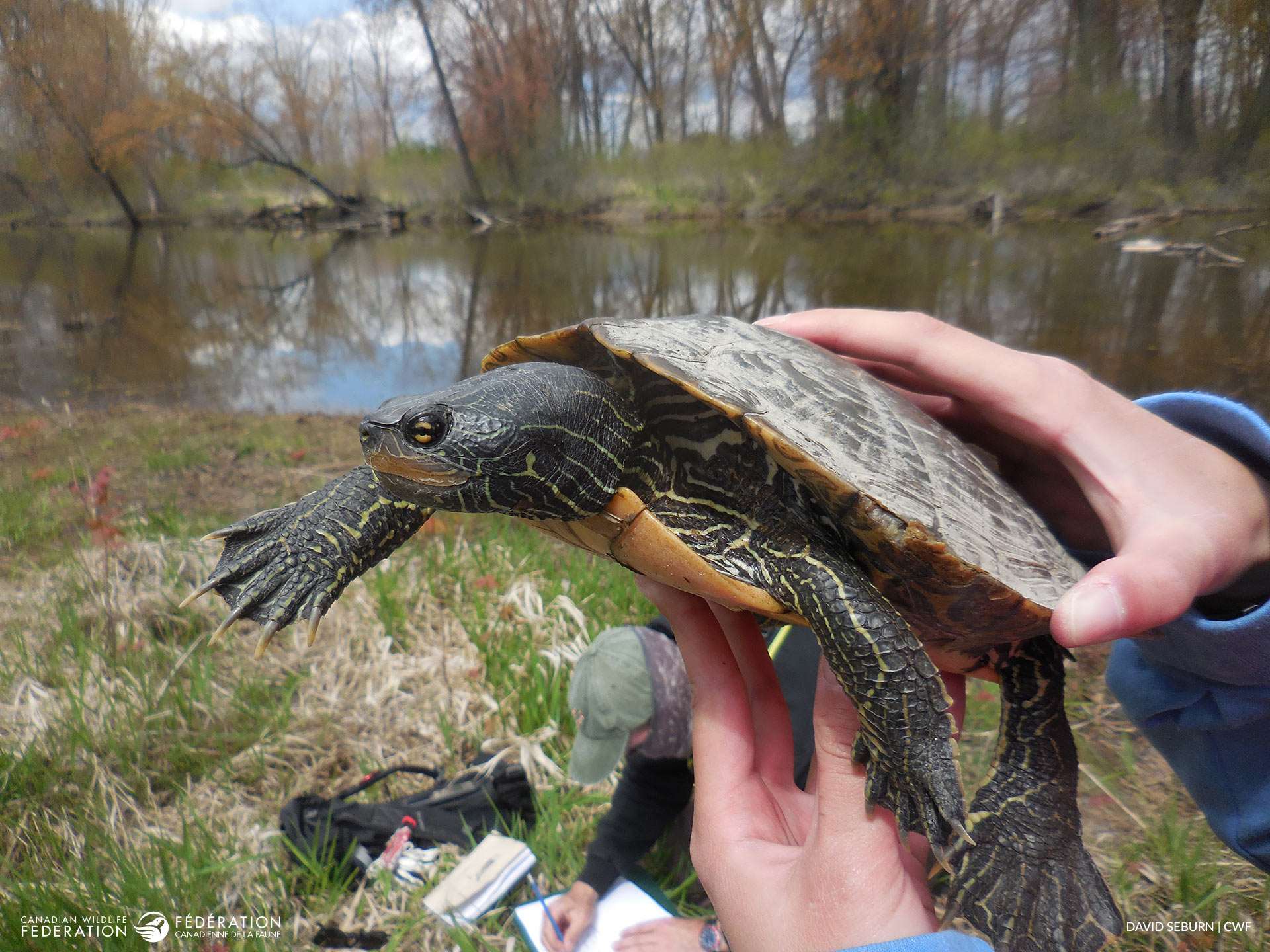
Another peculiarity of the Map Turtle is that, once the water warms up, they like to bask by floating at the surface of the water. This in turn creates a unique threat to the Map Turtle: boat strikes.
Studying the Boating Threat to Northern Map Turtles

The propeller of a boat can cut open the top shell, injuring or even killing the turtle. Sadly, it is known to occur, but the exact extent to which this affects the species is unknown at this time. One study found 18 per cent of Northern Map Turtles had propeller injuries to their shells in a busy waterway northeast of Toronto.
This past spring, our goal was to help assess the injury rate in Northern Map Turtles in the Ottawa River, near a busy marina. With the help of some colleagues from the University of Ottawa, we set about catching turtles, using two different methods, basking traps and dip netting.
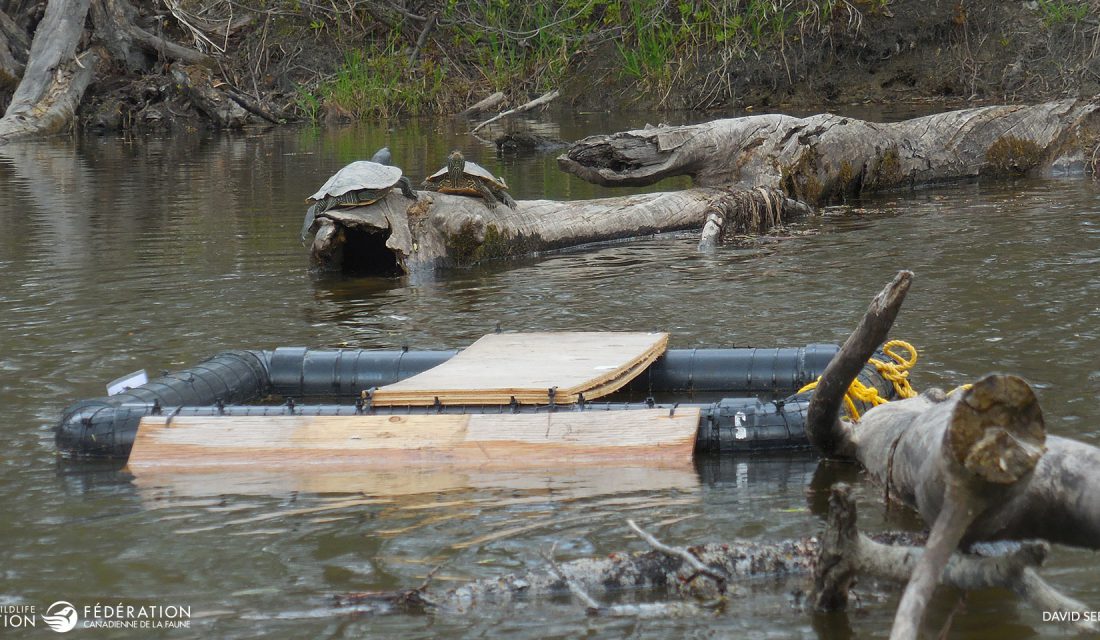
Basking traps consist of a platform for the turtle to bask on suspended over a net, so that when the turtle finishes basking, she falls into the net and is trapped. Our second method was to attempt to capture them via hand-held dip nets.
Yes, we tried this. No, it did not work particularly well.
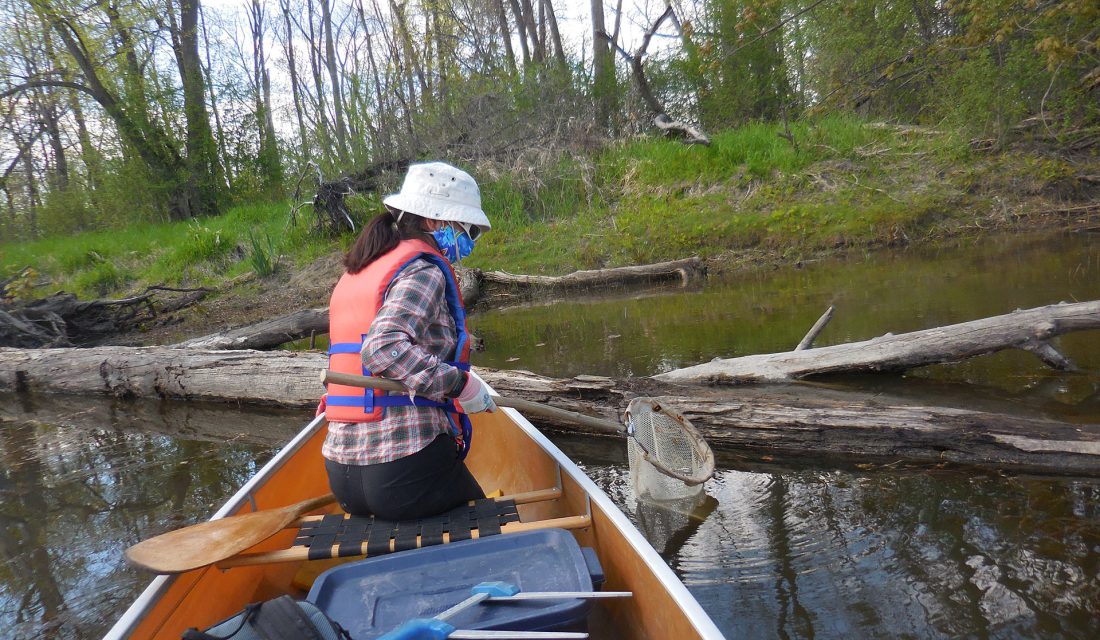
After catching the turtles, we gave each one a unique mark to keep track of individual turtles if they were re-caught. For each turtle, we recorded their size and weight and examined them for injuries.
Results
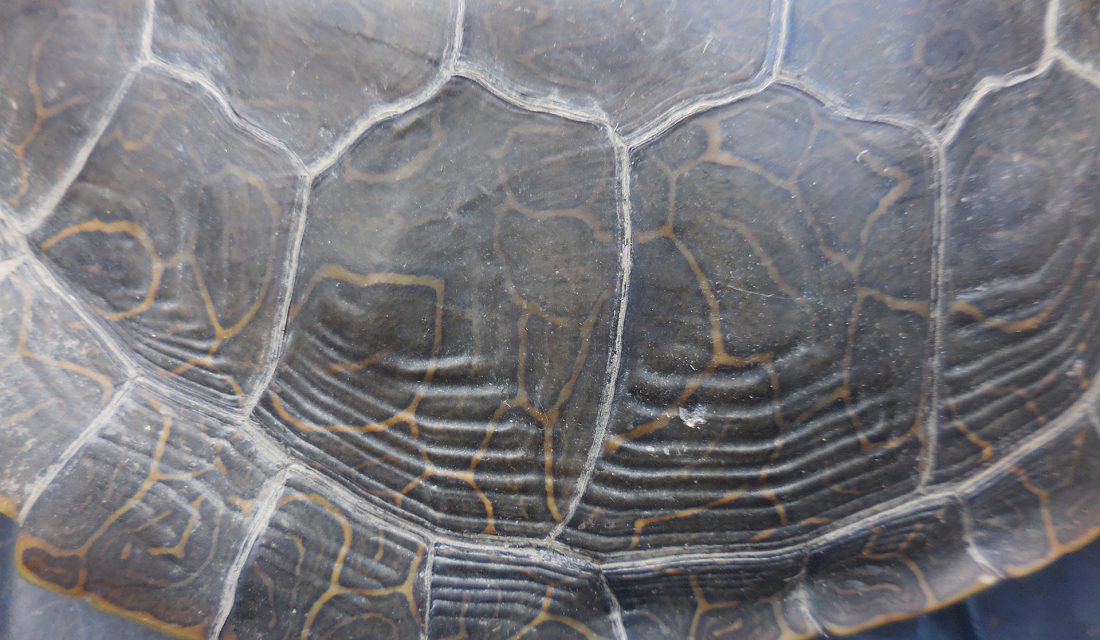
What did we find? The good news was that we found very few turtles with injuries and none with major injuries to the shell. On the other hand, we don’t know if turtles that are seriously injured by boats die and hence can’t be caught and counted.
In addition, we only caught 22 Map Turtles this year. Further study of this population in future years could give us a more detailed insight into the secretive lives of these turtles and the challenges they face.

